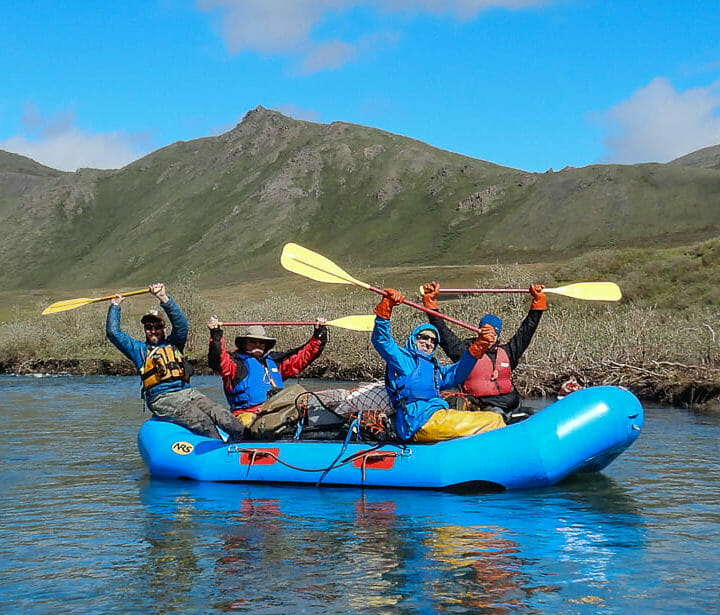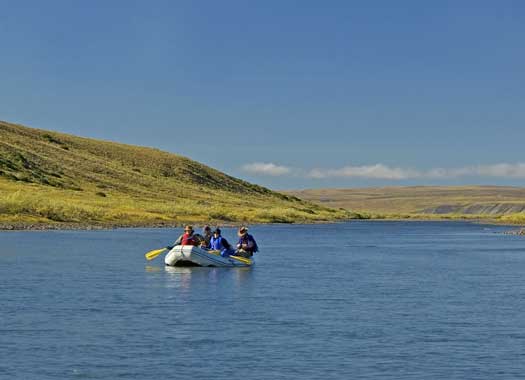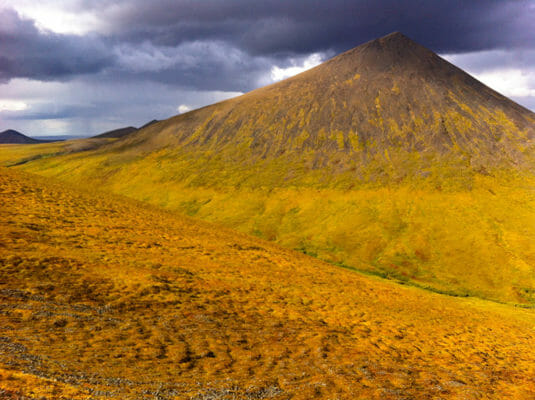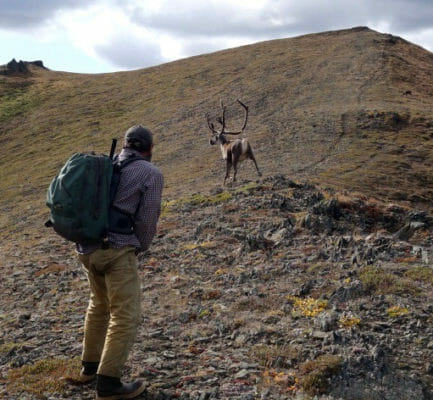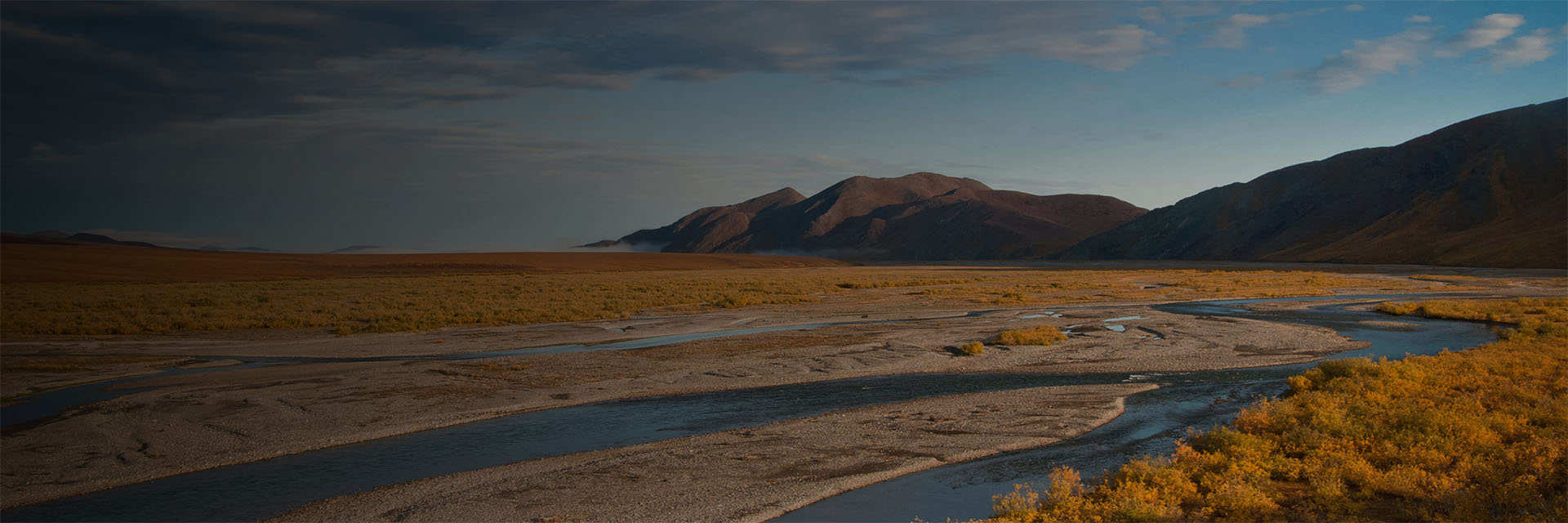Last updated: November 22, 2021
Itinerary
What follows is a general flow of events. Expect the unexpected and prepare to be flexible.
July 28
Meet your guide for a pre-trip meeting at 6:45 pm in Kotzebue, Alaska.
July 29
Fly north from Kotzebue across the Noatak River through the Brooks Range and ultimately into Gates of the Arctic National Park. We land on a river bar. After unloading the airplane and carrying our gear to the river we will make camp with views of mountains all around.
July 30
We spend the day getting to know the Arctic. After breakfast, we head into the mountains on foot. Sandbars show the tracks of caribou, moose, and maybe wolves or bears. The tundra is soft underfoot and rich with a variety of plants and berries. On this first hike we can gain some altitude as we ascend a long ridge towards the 5,000 ft peaks above camp.
July 31
Breaking camp takes some time and with 24 hours of daylight, there is no hurry. When we get the boats loaded and complete our safety briefing we push out into the current. The current is swift so we can cover 6 miles before lunch without trouble. When we see wildlife, we can pull ashore and get out the spotting scope and binoculars. The Nigu is not a big river but the valley is gorgeous. Clear waters push the boats first towards one cliff and then back towards the permafrost bluffs on the opposite side of the valley. Good camping abounds and we have plenty of time to explore away from the river in the evenings.
August 1
After gaining a tributary from the east the Nigu’s flood plain is dotted with small glacial lakes. The hiking near the lakes can be quite good and some of them offer excellent fishing. Along the shores of other lakes are several ancient stone tent rings marking the camps of Inupiaq hunters of long ago. Their stone fences used for herding caribou into the lake are also in evidence and bring the history of the area to life. Every day of this trip brings a fresh adventure and if lucky, wildlife too.
August 2 - 3
The lower reaches of the Nigu before it joins the Etivluk are lovely and rich in archeological sites. We are careful to leave everything just how we found it, but definitely enjoy finding evidence of ancient hunters in what is now a largely people-less landscape. The large lakes of the lower Nigu also host a wide variety of waterfowl and shorebirds. Plus they provide good grazing for caribou should they be in the area.
August 4
Puvkrat is the Inupiaq name for a dragon’s-back shaped ridge running perpendicular to the river. The rock spires host nesting falcons and hawks and ancient hunters built small caves in the rock to store meat. Cloudberries abound and the ridge stretches endlessly to the west. If conditions permit we will spend a full day exploring along the ridge.
August 5
The Nigu joins the Etivluk River below Nigu Bluff and the river doubles in size. The mountains begin to recede and we enter a land of rolling hills and rock bluffs, tundra stretching endlessly beneath a cavernous sky. Instead of dodging rocks and negotiating small cliffs we spend our paddling effort working to stay in the main current and negotiating the wind. It is a full day on the river paddling through an area where we often see Muskoxen feeding in the willows. At day’s end we perch our camp on a bluff well above the river for commanding views of the wilderness and wildlife.
August 6
Another day on the river. By now the routine of breaking camp is quick and efficient leaving more time for a hike during lunch or a stop at a promising fishing spot. The current picks-up its pace today and the river winds past great ice cliffs dripping with 10,000 year old water and calving great chunks of permafrost and ice into the river on warm days. Ptarmigan are common here along with raptors hunting them. Our camp this night will be positioned for a hike to Kingak Mountain the following day.
August 7
Kingak is a hard hike. The tundra is rough and walking across the vast plains is slow. But the rewards are immense. Kingak is near the geographically most isolated place in the US. It is further from any road, town or other development than any other location in the country. And the view of the wilderness can not be described, with the Brooks Range to the south and the grand curve of the earth to the north. Few people have ever been on Kingak Mountain, likely less than one party every 3 years. The hike is an all day adventure and a memory never to be forgotten.
August 8
The Etivluk River enters the Colville River Basin and the sky seems to swallow the land. Near the river, lakes dot the tundra and waterfowl erupt as we paddle around the corner. Many years we see caribou and feeding along the pond edges and sometimes we find moose crossing the river on an errand only they comprehend. The river grows ever wider and the gravel bars stretch in long arcs. The current slows a bit and we may have to paddle against the wind. The Etivluk joins the Arctic Alaska’s largest river, the Colville (Kuukpik in Inupiaq). The rush of current and the dazzling colors of Colville rocks are startling and we make good time on the larger river. Fishing on the Colville is good and there are nice bluffs to climb for views back to Kingak, Puvkrat and the Brooks Range where our adventure began. We make our last camp on a sprawling gravel bar near the Colville. A big driftwood fire and fresh caught fish are a perfect end to a day on the river.
August 9
We spend the morning listening for our plane. When it arrives we load our gear and head back to Kotzebue on the Arctic Ocean. A hot shower is in order.





